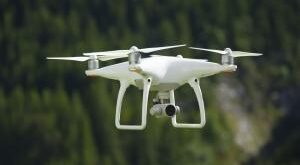DURHAM – Big tech companies like Amazon and Google are only now beginning to test drone delivery services worldwide. But they’re late to the game.
For years now, criminals have been using drones to deliver contraband over prison walls. It’s a worldwide concern, and North Carolina isn’t immune, either.
“It’s been sporadic for our facilities, but obviously even a single incident is too many for us,” Loris Sutton, chief of security for the North Carolina state prison system, said in a statement.
However, that could soon change.
Engineers at Duke University have teamed up with the North Carolina Department of Public Safety to develop a system monitoring the walls of the state’s prisons, with an app interface included.
Deterring unwanted drones
Enter Mary “Missy” Cummings, professor of electrical and computer engineering at Duke. As one of the Navy’s first female fighter pilots and a doctorate in human-computer system interaction, flying drones is her specialty.
In 2017, she received a National Science Foundation grant in partnership with landscape architects at Clemson University to develop an affordable and aesthetic system for deterring unwanted drones.
Mary Missy Cummings Duke Engineering (This work is licensed under a Creative Commons International License.)
Working together with her team of students, Cummings has developed an alerting system that uses microphones and thermal cameras to detect unwanted drones and the people flying them.
Meanwhile, their colleagues at Clemson have built a synthetic “bird’s nest” the size of a hawk’s nest to camouflage the associated equipment.
The team will be beta testing the system with the Town of Cary later this summer, and eventually with Duke Gardens. If the initial results are promising, Sutton said she hopes the emerging system might be able to extend to monitoring the walls of North Carolina’s prisons.
New app interface
By all accounts, it likely could.
Chunge Wang, a Duke undergraduate student majoring in computer science, has already created a new app interface for the equipment that is tailored to the needs of prisons, dubbed Prison Reconnaissance Information System (PRIS).
In its current form, the hardware consists of a microphone connected to a Raspberry Pi — a simple, inexpensive computer board originally developed to teach basic programming — a data server and a smart phone, costing less than $1,000 total.
Duke University researchers discover ‘perfect absorber’ anti-laser
The Raspberry Pi is loaded with a machine-learning algorithm that constantly processes the data collected from the microphone to isolate the sounds a drone makes from background noise. When it detects the buzzing whir of a drone’s propellers, it sends a notification to an app loaded on smart phones carried by the prison’s security personnel.
“The app displays the information in a visually dynamic way in real-time, using different symbols overlaid on a map view of the prison,” explained Wang in a release.
“The goal is for the users to be able to quickly understand where and how far away the potential threat is, how confident the system is that it’s actually a drone, and what’s most likely to happen next.”
Real-world environment
Eager to test PRIS out in a real-world environment, Cummings, Wang and their team recently visited one of North Carolina’s more remote prison facilities, Dan River Prison Work Farm in Caswell County.
The group spent several hours collecting data and actually seeing how well the system was able to collect data and display it through the app.
“We’re still trying to figure out some problems with false alarms caused by helicopters and weed eaters, both of which show up at prisons from time to time,” said Cummings.
“But when we tested at a local airport, we were excited to see that we could filter out flying airplanes. We did have some trouble with airplanes that were taxiing, but you’re not very likely to run into those at a prison.”
So far, the reviews have been positive.
“The work the team has done so far has been terrific,” said Sutton. “I’m excited about the possible outcomes of the project and look forward to the day that they can produce a finished product for us.”
Wang is presenting his research this month at the American Institute of Aeronautics and Astronautics (AIAA) AVIATION Forum, the premier aviation conference in the nation. After a summer of testing, if the technology performs well, the team will look into commercializing it.
“This low-cost, easy-to-use technology has the potential to put early warning drone detection capability into the hands of managers of small public venues and prison wardens, which substantially benefits public safety,” said Cummings.
“This project demonstrates what can be achieved through excellence in research and engineering, as well as strong partnerships with a local community that has pressing needs.”
This work is supported by the National Science Foundation and the North Carolina Department of Public Safety.
 Unmanned Aerial Vehicle The latest drone news
Unmanned Aerial Vehicle The latest drone news





